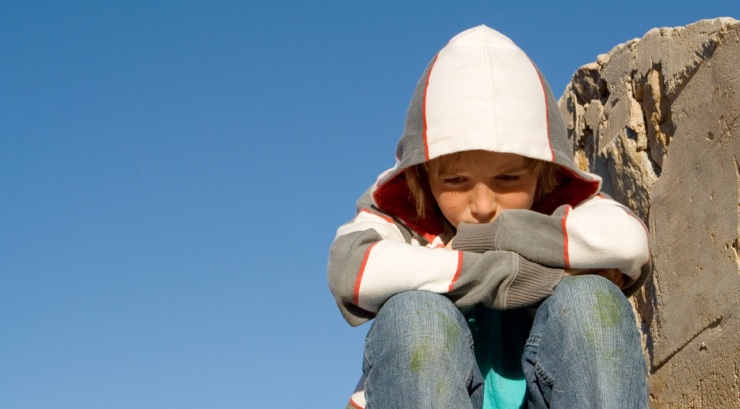 As a parent, it can be difficult to determine what to do when your child exhibits a particular degree of shyness, and definitely challenging to differentiate between what is a tendency to act shy, and what is a deeper level of Social Anxiety. So, let’s do a quick comparison of the two, and then discuss some tips on how to support your child to become more socially comfortable.
As a parent, it can be difficult to determine what to do when your child exhibits a particular degree of shyness, and definitely challenging to differentiate between what is a tendency to act shy, and what is a deeper level of Social Anxiety. So, let’s do a quick comparison of the two, and then discuss some tips on how to support your child to become more socially comfortable.
Similarities between Shyness and Social Anxiety
First, the similarities: Both shy and anxious people “think” of social situations as being difficult to extremely difficult. Both imagine those situations in a negative light. Both “feel” some degree of anxiety or distress when thinking about and leading up to social situations (anticipation). Both describe feeling anxiety during conversation, including problems with voice quality.
Differences between Shyness and Social Anxiety
And some differences: There are some shy people who are not anxious about social situations. They just are more reserved and prefer to be alone. When in an anxiety-producing situation, socially anxious individuals may have higher levels of anxiety. It has been noted that people who are socially anxious may over-report their anxiety. This may be attributed to a proclivity towards more self-focus and monitoring of distress. The socially anxious person also has more of a concern that the anxiety will lead to embarrassment. Research has indicated the socially anxious person’s symptoms to include: racing heart, sweating, stomach upset, blushing and trembling in 100% of individuals. Shy individuals tend to be more accurate when assessing their anxiety, with only 65% of individuals reporting the same symptoms.
Shyness for a child can be associated with a number of interpersonal challenges. Research has shown that as early as kindergarten, peers start avoiding shy children. Passivity, infrequent eye contact, and avoidance of social interactions are often viewed as intended negative behaviors; thus, shy children are often mistakenly identified as less friendly. Particularly in westernized countries, like the US, where assertiveness and social initiative is praised and highly valued, shyness is seen as non-normative even from early childhood, which makes it even more difficult for a shy child to integrate and acclimate into social networks.
So, what can you do to help your child overcome his shyness? Here are some helpful tips to help your child feel more comfortable in social situations, not isolate, and learn to connect with others:
Notice what’s going on with your child
Pay attention to what your child says and how he acts. Note the markers of shyness and what could be social anxiety, as listed earlier. Respond with empathy to your child’s sensitivities and provide him with the openness he needs to be able to express genuine fears and concerns. Help him feel safe to express emotions in the moment in order to avoid repressing them in the future, or magnifying his fear of social interactions. Avoid shaming your child, which will make him feel worse about himself and even more insecure. Empathize with your child, which will help him develop empathy, and help him connect better with others. You can model this, as well as, confident behavior for your child to follow. But, remember, empathizing with your child doesn’t mean being over-protective of him.
Avoid labeling your child as “shy”
Don’t ignore your child’s worries, but point out that he can overcome his fears. For instance, in the case of being anxious about a new situation, remind him that he takes a bit to warm up to it, but bring up a time when he ended up having fun by the end of the event.
Teach your child helpful strategies for dealing with feelings of social awkwardness
Talk through your child’s nervousness and reassure him that it is a feeling most people will experience at some point in life. Remind your child that he doesn’t have to be the center of attention to be interesting to others, and teach him to ask other kids questions and listen to be engaged. Help him think through situations that would make him nervous and how he could make himself more comfortable with specific suggestions. That way, he’ll feel more ready to handle a new experience.
Encourage your child to engage daily
Kids need to be taught things like how to shake hands, make eye contact, smile and respond to conversations appropriately. It might be helpful to make games out of social skills and practice at home. You can also be playful in practicing skills by using role play to work on things like how to introduce themselves to others, join in activities or initiate activities with other kids.
It’s truly important that parents understand the significant affects they may have on their child’s social development. In the case of shy and socially uncomfortable children, you have a distinctive opportunity to impact the typical or usual patterns that occur, and possibly impact their whole social trajectory. Hopefully, putting some of these tips into practice will help your children gain more confidence to better handle uncomfortable situations in the future.
References:
Miller, S., Tserakhava, V., Miller, C., (2014). “My child is shy and has no friends: what does parenting have to do with it?” Journal of Youth and Adolescence, 40 (4), 442-452.
Various research from Dr. Laura Markham.

 Emily Powell Bass
Emily Powell Bass
[…] Read More […]